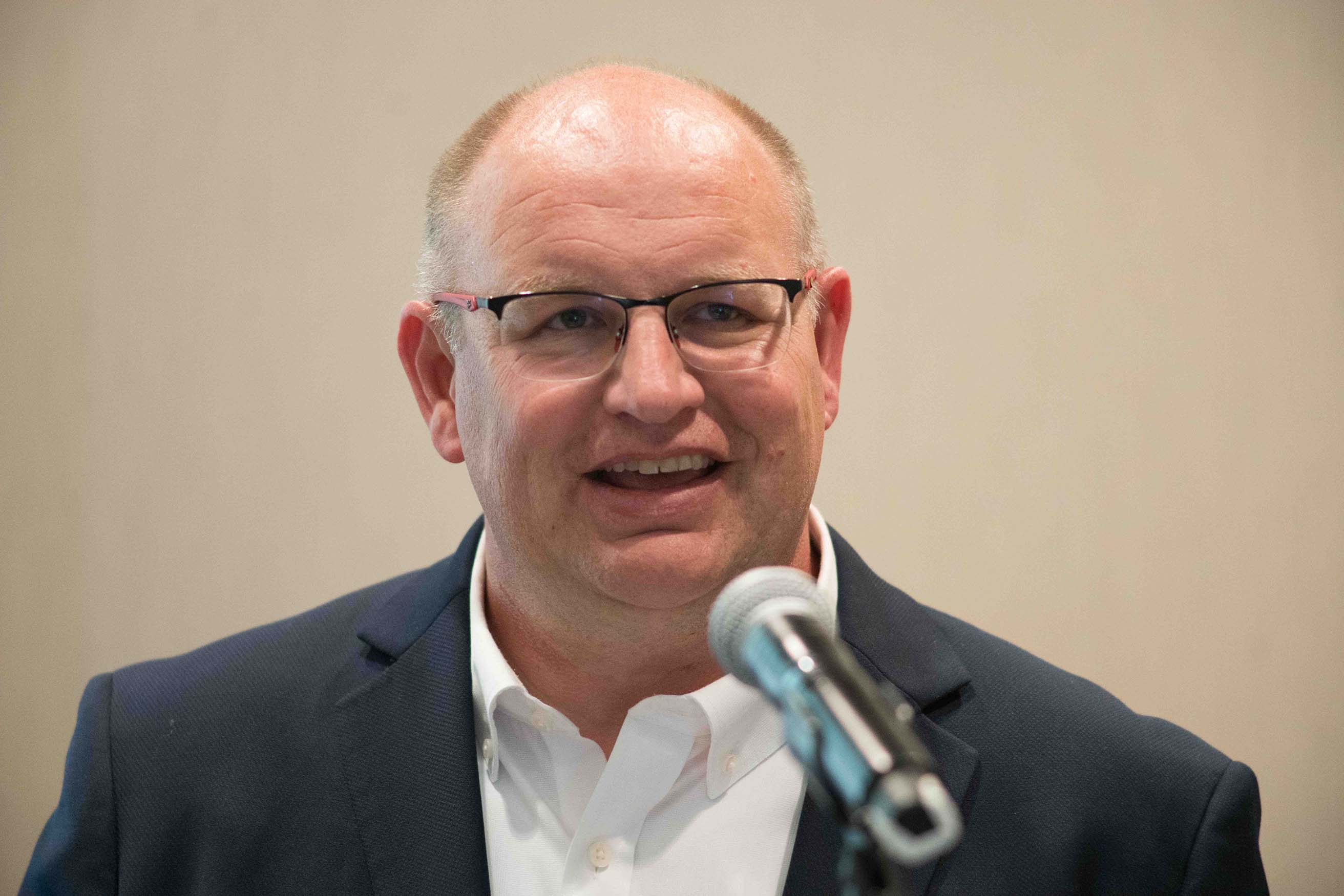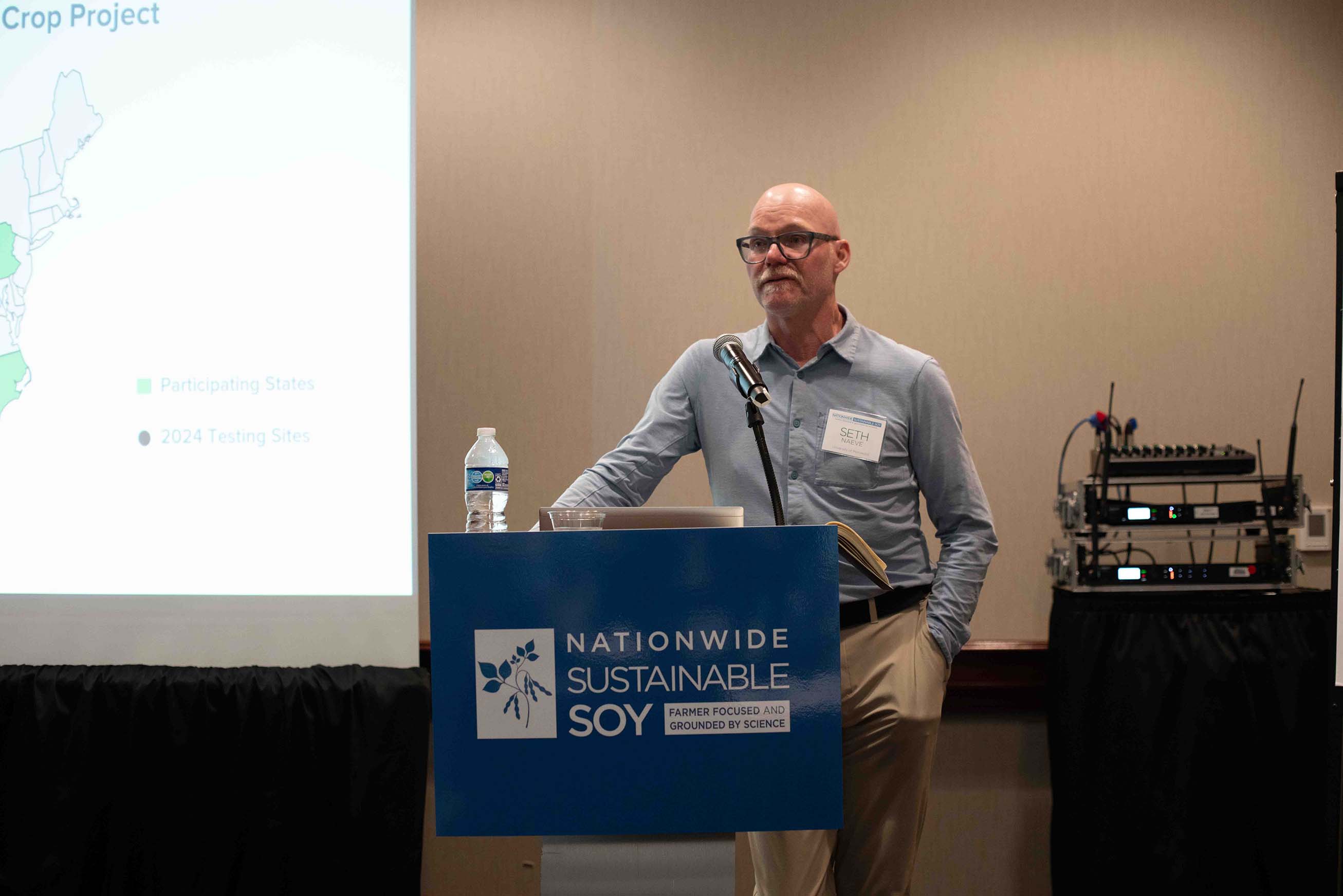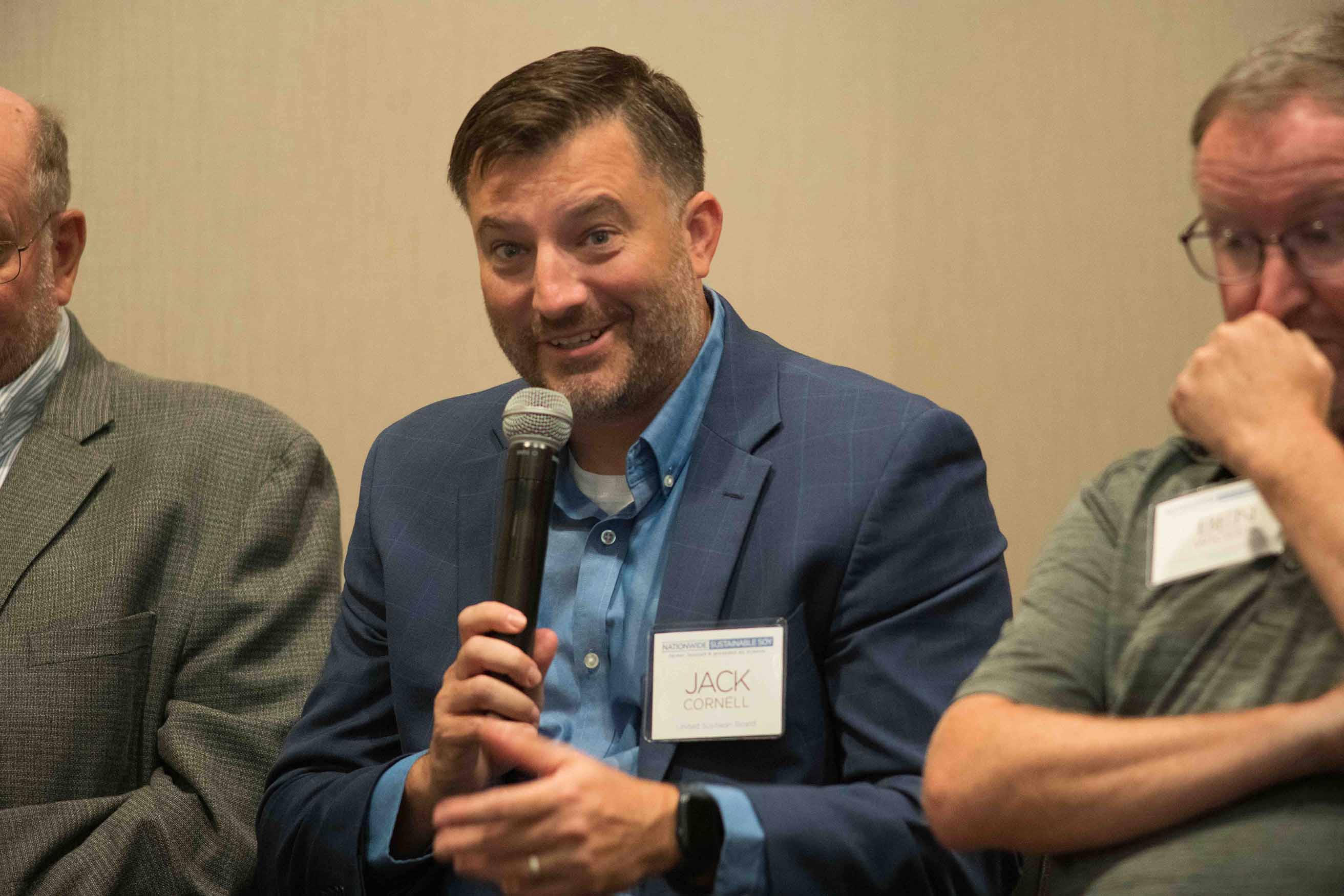
Attendees discuss conservation research during the Nationwide Sustainable Soy meeting in Indianapolis. (Photo: Iowa Soybean Association / Joseph Hopper)
Nationwide Sustainable Soy enters next phase
August 8, 2024
“Nationwide Sustainable Soy” is an Iowa Soybean Association grant funded by the United Soybean Board. This is a major grant: there are many working parts and partners at work but the heart of “Nationwide Sustainable Soy” is focused on helping farmers successfully grow sustainably produced soybeans.
“What is occurring today within this grant to glean some information, advance some research projects, advance the general basic science to help farmers understand,” says Joe McClure, co-director of the Iowa Soybean Association Research Center for Farming Innovation.

McClure spoke to a packed room of university academics, agronomists, soybean association staff and others involved in the soybean research behind the Nationwide Sustainable Soy grant ahead of the 4th annual Soybean Research Forum and Think Tank in Indianapolis. There are some lofty challenges involved in adopting and integrating sustainable practices on the farm, which led to the multi-state, multi-group coalition powering “Nationwide Sustainable Soy.” At the meeting in Indianapolis, the group reviewed a few of their ongoing efforts as “Sustainable Soy” nears its sophomore year.
Year 1 and Science for Success
Dr. Seth Naeve, of the University of Minnesota provided a brief history of how the sprawling multi-state collaboration came to be and gave an overview of Science for Success, the checkoff-funded partnership of 26 extension specialists which serves as an important knowledge-base and outlet to amplify the latest research to soybean farmers.

“When Joe (McClure) approached us about working on this project, we went out to some of our core collaborators,” Naeve says. “We wanted to try and identify some of the gaps that we could see existing in this question around supporting cover crop expansion at the farm level. Joe made it very clear this was a real place to focus: to help those early adopters into that transition and make better headway so we're able to keep those folks in that transition longer and include more people along the way.
“We struggled just a little bit because most of us are not real cover crop researchers historically. We come from more row-crop backgrounds, we needed to both fill the gaps but use our best talents to put forward in this research effort and we had a relatively short timeline. We decided there's going to be around three points to this: we needed a good background statement, literature review, metanalysis on some of the data that's been published already. We wanted to get an on-farm trial network setup so we could go and pull data out and enrich and expand existing cropping models and then extend that communications effort.
“For being around less than a year I think we have a really good start on it. I think we have 10 states (participating), two additional states called and said we're not on the grant but we really like what you're doing and we’re willing to contribute our time and resources.”
Answering a frequent question
One of the three identified points outlined by Naeve, metanalysis, was discussed in-detail by Dr. Tatiane Severo Silva, of the University of Wisconsin. A frequent question surrounding cover crops: “When should I terminate my cover crops?” led to an important quest to find answers.
“The hypothesis is that changing cover crop termination time will consequently affect soybean planting time and impact soybean yield,” says Silva. “So the objective of this project is to retrieve and summarize all of the information available out there regarding the effects of termination time of cover crops and how this can effect soybean yield.”
The “Nationwide Sustainable Soy” meeting in Indianapolis closed with small group table-meetings brainstorming and continuing the discussion on how to increase cover crop adoption, how to communicate about cover crops to farmers, how to facilitate better connectivity between research and outreach, among other topics.

Cover Crop Q&A Excerpts
Note: the following excerpts were taken from a panel discussion and have been edited for clarity and brevity. The “Implementation Factors for Cover Crops” panel discussion was moderated by Dr. Ben West, of Farmers for Soil Health and featured Gary Asay, farmer and past board member of the National Pork Board; Jack Cornell, director of sustainable supply at United Soybean Board; and Ben Wicker, executive director of the Indiana Agriculture Nutrient Alliance.
Q: What is the difference between a farmer who is successful with cover crops and a farmer who struggles with them?
Cornell: “We always had a saying: you have to have the want to go out and understand how you can put that practice into your operation. It’s a holistic change, not just one element of your operation has to change, but your mindset, chemistry plan, planting dates, harvest dates. Do you have the want to do this? What's driving you, do you want to make this change?”
Asay: “Mindset. I went into it saying this is going to work. I’m going to make it work.”
Wicker: “Have a plan. These practices, like any farming practices are going to be really heavily dictated by the season, weather and all of what goes into it. If you’re going in with bad information or overzealous recommendations at the start, or get caught with a bad season, if you don’t have that experience you can find yourself in a real mess.”
Q: What are the biggest challenges or biggest opportunities in management for successful implementation of cover crops?
Wicker: “We've done some survey work on barriers in Indiana, they tend to fall somewhat similarly across state lines. Time and management are the two that show up. The need for technical assistance, building that knowledge base but then adding or changing that operation on the farm often requires a change in resources, equipment and labor that makes it really tough to experiment. I know we say ‘test it, try it’ but sometimes the commitment can be bigger than that.”
Cornell: “I think one of the key factors is going back to that technical assistance. It's really having someone as a partner in your sustainability journey. Someone you can call, available to you to help you get through certain hurdles. If I can't find cereal rye from my typical dealer, where can I source it? Having access to people in-place that understand the space, understand your region, can help you navigate the hurdles in place.”
Back